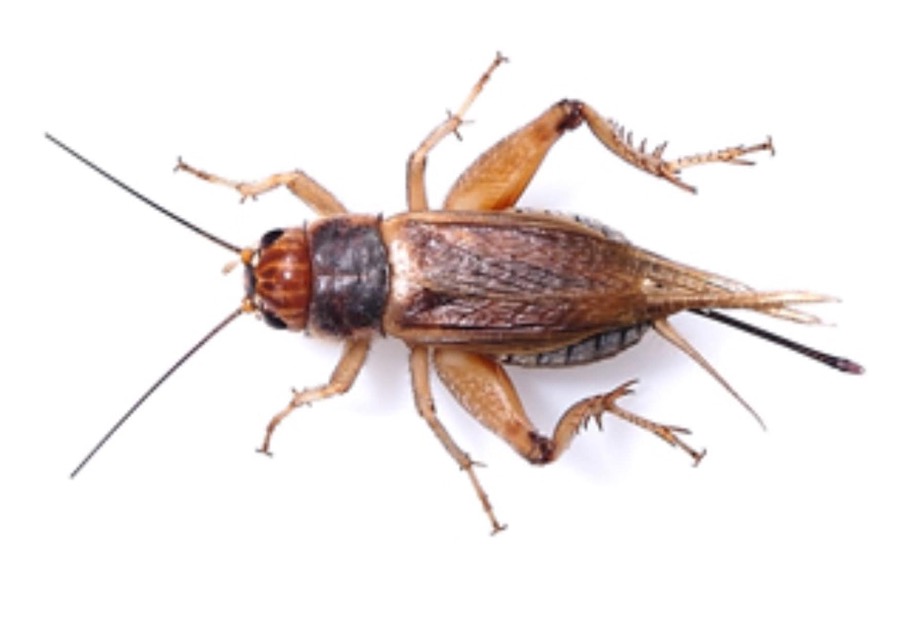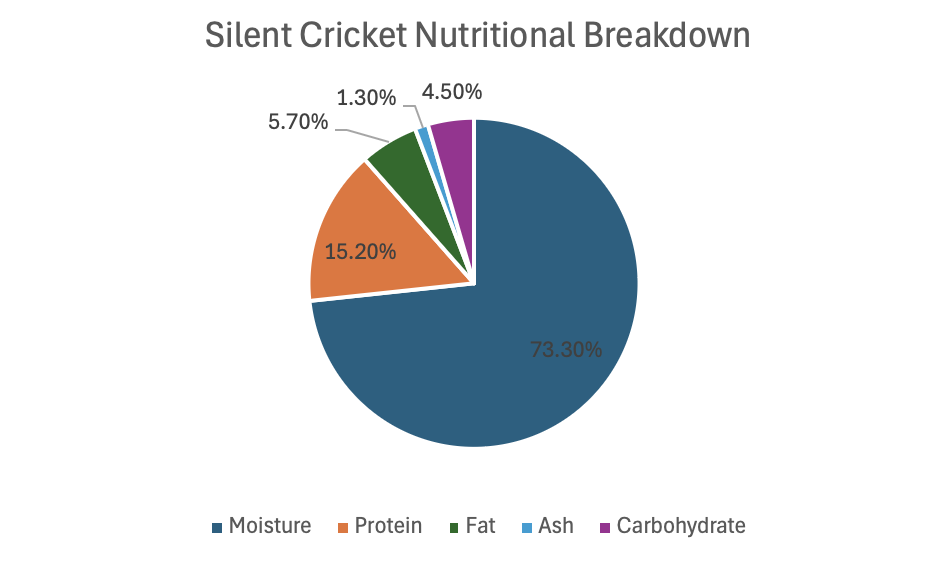
Silent Cricket Care Sheet
Silent Crickets - Available in 6 sizes Silent crickets or Gryllus assimilis are native to the West Indies. Each and every week throughout the year, Livefoods Direct breeds a minimum of 200,000 silent crickets for its UK customers.
Prepack and maxi packs of crickets should be stored in a cool, dark place at a constant temperature, preferably 18-20°C. A teaspoon of progrub may be added to prolong shelf life once the crickets have eaten the bran provided when packed.
Micro (hatchling) crickets are very prone to drying out and should always be given a source of moisture although a damp atmosphere or free water should be avoided. They can be stored in pre pack tubs unless you want to grow them.
Bulk crickets must be unpacked as soon as they arrive. To prevent escape, tip the contents of the bag or tub into a large plastic bucket and take the bucket outside.Shake all the crickets off the cardboard into the bucket, and discard the cardboard.
Please note contrary to what the name implies, Silent crickets, especially the large and adult variety will chirrup when seeking a mate.
Silent crickets provide a highly nutritious diet (58.4% protein as a % of dry matter) for both birds and reptiles. Silent crickets are bred on Progrub, a protein rich meal of bran and potato blended specially for cricket rearing by Livefoods Direct. They are a safe and clean livefoods rich in protein and relatively easy to store.
They have an amazing growth rate, from hatching from its egg pod to being able to reproduce itself only takes a silent cricket 35-42 days under ideal conditions.
Silent crickets are sold in a variety of sizes to suit all needs.
Feeding and Storage
Micro (hatchling) crickets are very prone to drying out and should always be given a source of moisture although a damp atmosphere or free water should be avoided. They can be stored in pre pack tubs unless you want to grow them.
Bulk crickets must be unpacked as soon as they arrive. To prevent escape, tip the contents of the bag or tub into a large plastic bucket and take the bucket outside.Shake all the crickets off the cardboard into the bucket, and discard the cardboard.
When storing bulk crickets, It should be remembered that the larger instars (large or adults) are cannibalistic and more than capable of chewing their way out of and escaping from flimsy containers. Exo terra faunarium are a perfect container for medium, large and adult crickets and they are available in various sizes. They also do a small cricket keeper.
Livefood Accessories:
Provide a feeding dish of progrub on the floor of the box next to the egg trays. Put some sliced carrot on top of the egg trays AWAY FROM THE PROGRUB. This can be replenished every couple of days, but any old uneaten carrot should be removed to prevent fruit fly infestations. Also add a feeding dish containing solid water gel or a jelly pot for moisture. Keep the container at a temperature of 18-22 °C.
Jelly Pots
Crickets are going to escape – it’s a fact of life. Fortunately, they are extremely sensitive to insecticides.
When it comes to feeding crickets most lizards, frogs, toads, salamanders and some small snakes and turtles, crickets are probably the single most widely- utilized food in the world. When you consider that they’re also used as food for arachnids, birds, fish and some small mammals, and a fishing bait, you can just imagine the incredible number of crickets which are gobbled up every day.
Crickets are usually available in several different sizes. The smallest size is a hatchling which also can be called a “pin head” are just a couple of days old and are very tiny. They are comparable in size to fruit flies and likewise are easily handled even by such small animals as newly – metamorphosed froglets. Then there is a range of sizes from smalls to adults depending on what you are feeding.
Shipping Live foods in the winter months EXTREME COLD WEATHER (OVERNIGHT 0C OR LOWER)
Live foods recovery advice:
- Move them immediately to the warmest spot in your home, (room temperature)
- Leave them in this area overnight if needed.
- Don’t handle your livefoods unnecessarily until they are fully recovered
Bulk bags are for transportation, once your livefoods are moving normally, handle and store them in the normal manner.
Remember. Your livefoods may appear dead but 90% of the time they will recover if you follow this advice.

A Pie Chart Showing the Nutritional Breakdown of A Silent Cricket




